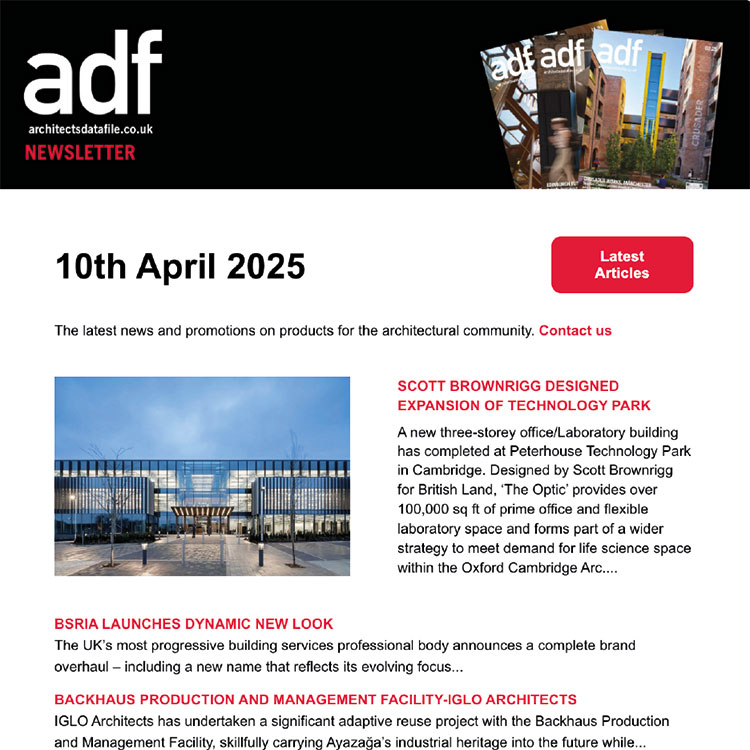Architect Tom Dollard from Pollard Thomas Edwards looks at the likely impact of an AECOM-led research project into creating affordable low carbon housing at scale, highlighting the potential but also the serious barriers that remain
Building for 2050 is a major, five-year research project commissioned by the Department of Business, Energy and Industry in 2017, into the delivery of low cost, low carbon homes at scale. The Government has invested around £1.9m in the project, which has been led by AECOM, with the research team also consisting of architects Pollard Thomas Edwards, building consultants Four Walls, and energy consultancy LCP Delta.
The research, which includes quantitative study of real projects, focuses on the realities of delivering low carbon developments in England and Wales, but the key findings broadly apply to new housing throughout the UK. Including real-world examples, the ‘Building for 2050’ report provides a snapshot of the UK’s construction industry and its ability to deliver low carbon homes now. It is a ground-breaking document which identifies how to minimise cost and improve energy efficiency in reducing carbon emissions, while increasing consumer demand, driving growth, and accelerate industry delivery of low carbon housing.
The project emerged as part of the Construction Sector Deal established by the Government in 2018 as “an ambitious partnership between Government and the construction to upskill the sector on innovative technologies. Five years on, launching the new Building for 2050 report, five years on, business and energy Minister Lord Callanan summed up the Government’s view: “Making the UK’s homes more energy efficient is the best way to cut household energy use and reduce energy bills.” The Government is investing heavily in the challenge of cutting emissions from all UK buildings; Lord Callanan confirmed its goal of a 15% cut by 2030, against the backdrop of an overall 78% cut in UK emissions by 2035 (against 1990 levels).
The Future Homes and Buildings Standard will cut emissions in new homes by 75-80% by 2025. Lord Callanan said that the research was important to “build our understanding on the best way to deliver low-carbon strategies for new homes as we continue reducing the country’s contribution to climate change by 2050.”
The report defines ‘low cost low carbon’ homes low carbon homes with a lifetime cost similar to, or lower than, standard new homes currently on the market. In terms of emissions, the homes studied in the report are equivalent to Code for Sustainable Homes 5 or 6 (or Code 4 with a fabric first approach) or Passivhaus.
The research examined the drivers, attitudes, barriers and challenges related to low cost, low carbon housing, and will be used to help shape policy on delivering low carbon homes in the UK. The resulting in-depth report explores the pros and cons of living in low carbon homes, and underlines the importance of local planning policy for catalysing their development. It benchmarks the British construction industry’s ability to mitigate the impact of climate change.
Crucially, Building for 2050 makes clear that if all new homes are constructed to a low carbon standard, there should be no need to retrofit these homes before the UK Government’s net zero 2050 deadline. Yet the report also identifies significant skills gaps across the construction industry and makes clear that performance gaps – the difference between a building’s predicted and actual energy use – are still commonplace in new-build developments.
Research methods
The research included a detailed analysis of case studies – small-scale housing developments in Cambridge (Marmalade Lane Cohousing), Neath (Active Homes), Corby (Etopia Homes), and London’s Waltham Forest (Tallack Road), as part of a rounded analysis of the whole process from inception to occupancy – developing, designing, constructing, and living in low cost, low carbon homes. The report identifies the barriers and opportunities to delivering such homes at scale, and quantifies the likely impact on energy demand and carbon emissions.
No major housebuilder is building low carbon homes at scale in the UK. This is why the case studies focus on low carbon projects by small and medium-sized developers; each of whom had different funding models. The views of multiple stakeholders were incorporated, including the wider construction industry, and the energy services sector. A wide-ranging consumer survey plus a general industry survey added further depth to the findings.
The case studies include interviews with developers and residents, the latter sharing their expectations and experiences of living in their homes, for example energy bills, comfort, and the usability of low carbon technology. We undertook a design review of the homes as well as site observations during construction and post-completion on the buildability of the designs, and assessed cost impact of low carbon solutions.
Post-completion testing of thermal performance of building envelopes and mechanical ventilation systems was undertaken, and we compared SAP modelling undertaken by the development teams and by the project team. Energy and environmental performance in use was monitored, and the operational data was considered within the context of a changing energy system. Key findings included:
- The industry needs certainty on the scope and timing of regulatory requirements and clarity on the role of planning policy for low carbon homes.
- Local planning policy is a key driver for low carbon homes.
- The public sector can play a significant role in promoting more low carbon homes by setting clear performance requirements.
- Capital cost uplift in well-planned, well-constructed low carbon developments is minimal, and not a deterrent to delivery, and wider uptake would likely reduce this further. Highly complex designs aiming to deliver zero carbon or energy positive homes are likely to have on-costs considerably greater than the market will pay for.
- The homes studied were no more costly to buy based on ‘standard’ homes, but easy-to-access information about them remains an issue.
- There would likely be increased demand if developers marketed low carbon homes with details of features and running costs, and provided post-occupancy support.
- The construction and energy services sectors need to engage better to support deliver while avoiding significant energy infrastructure costs.
As architects, we brought expertise in the design of housing including low carbon housing, plus modern methods of construction, research and guidance to the industry on low carbon homes. We undertook onsite audits including assessing the performance gap, and conducted interviews with building professionals.
AECOM project managed the research team, contributing expertise in housing design and construction, modern methods of construction, low carbon housing, and innovation, as well as delivering Government research projects. The report’s technical lead, AECOM director Alison Crompton, commented on the research’s critical importance for the industry: “By unpicking the barriers and challenges to at-scale low carbon housing delivery, we can support industry in making informed decisions, based on evidence and insight.”
Four Walls are experts in building performance evaluation, and led on analysis of the dwellings’ energy and comfort performance, including advising on and testing building fabric, and undertaking monitoring. LCP Delta (incorporating Delta-EE) specialises in ‘new energy,’ providing detailed insight on innovative energy solutions for housing.
Tom Dollard is a partner at architects Pollard Thomas Edwards





